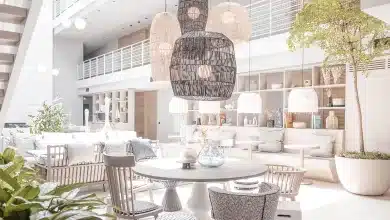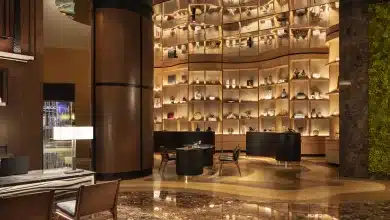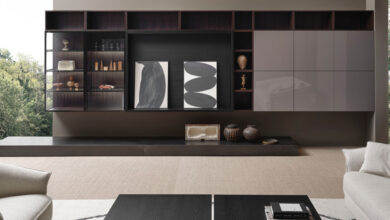One Story Of Two Experiences
Soodabeh Naderi is the Architectural Designer at Falkbuilt and the designer behind Falk Nest, the interior construction company’s stunning new headquarters in Calgary, Canada.
Naderi, whose academic background includes architecture and interior design, is a member of Interior Designers of Canada and Interior Designers of Alberta.
Naderi’s extensive experience includes working at SA Design Studio, Kasian Architecture Interior Design and Planning, DIRTT Environmental Solutions and some small contract projects.

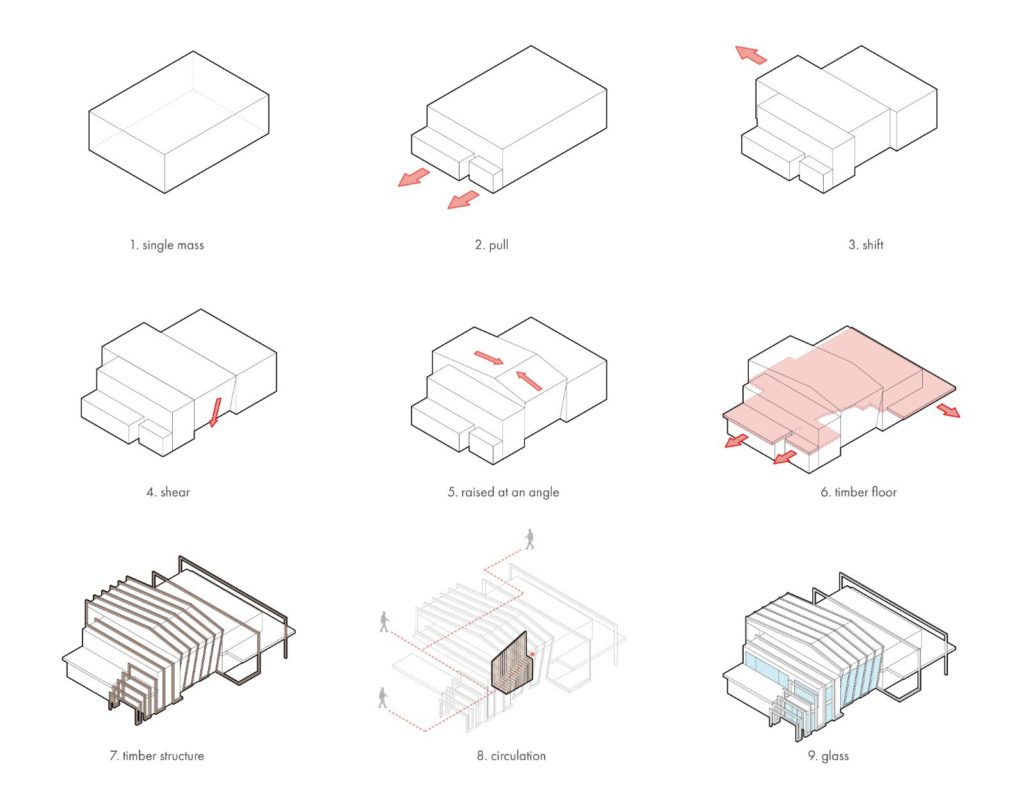
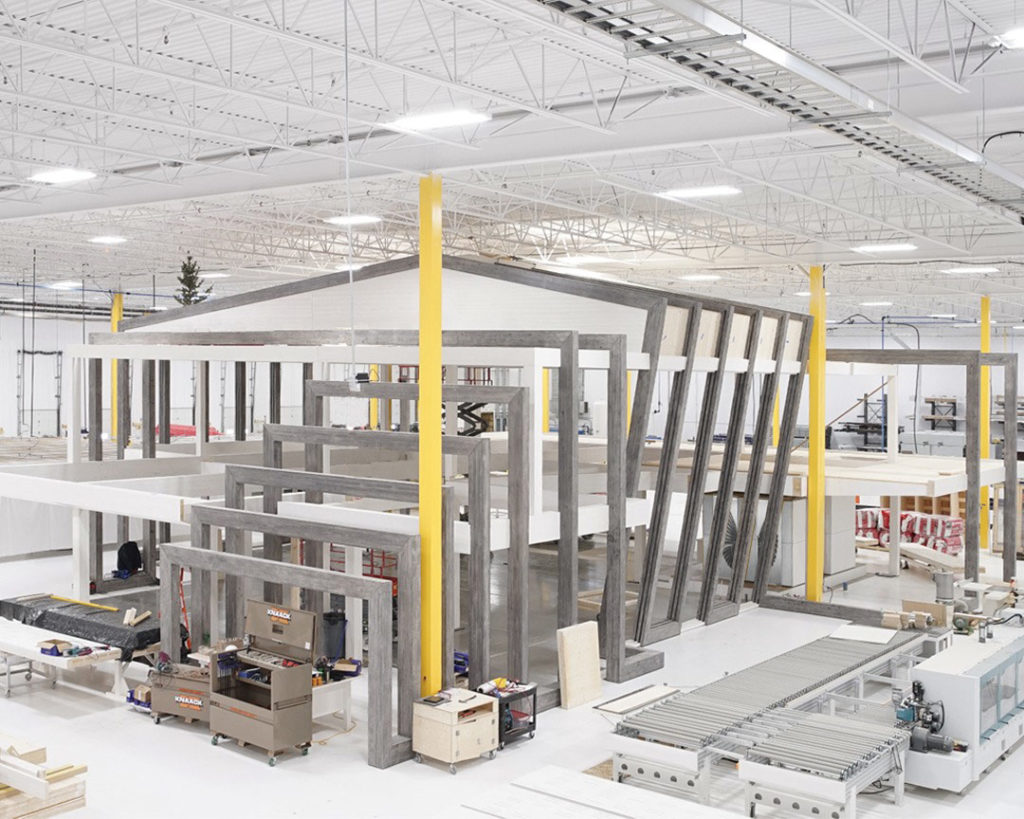

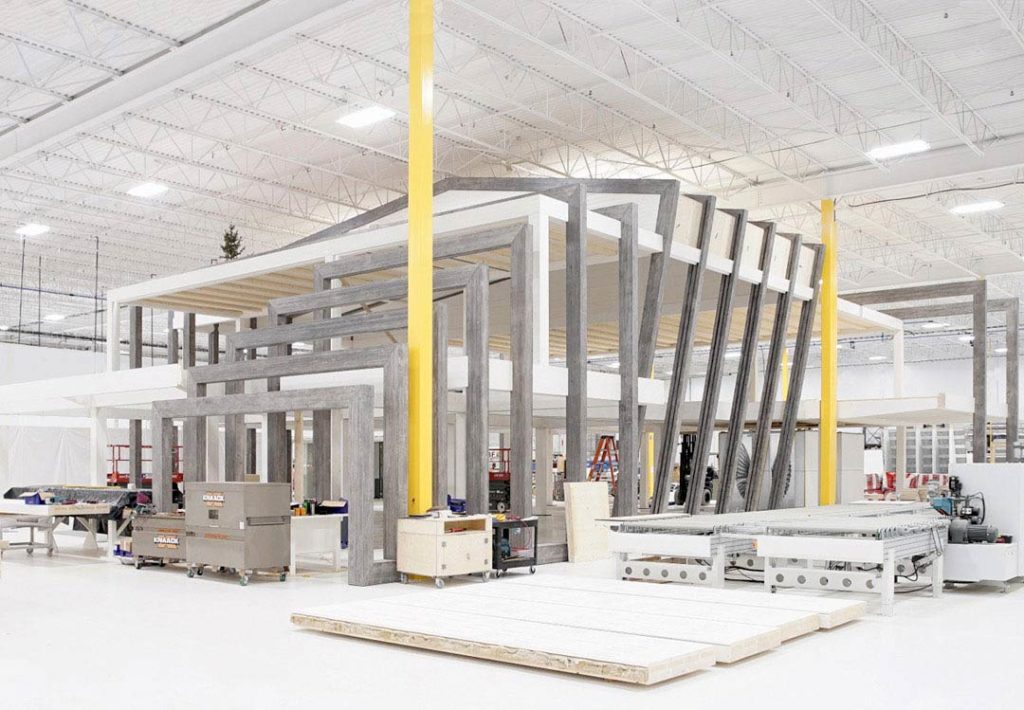
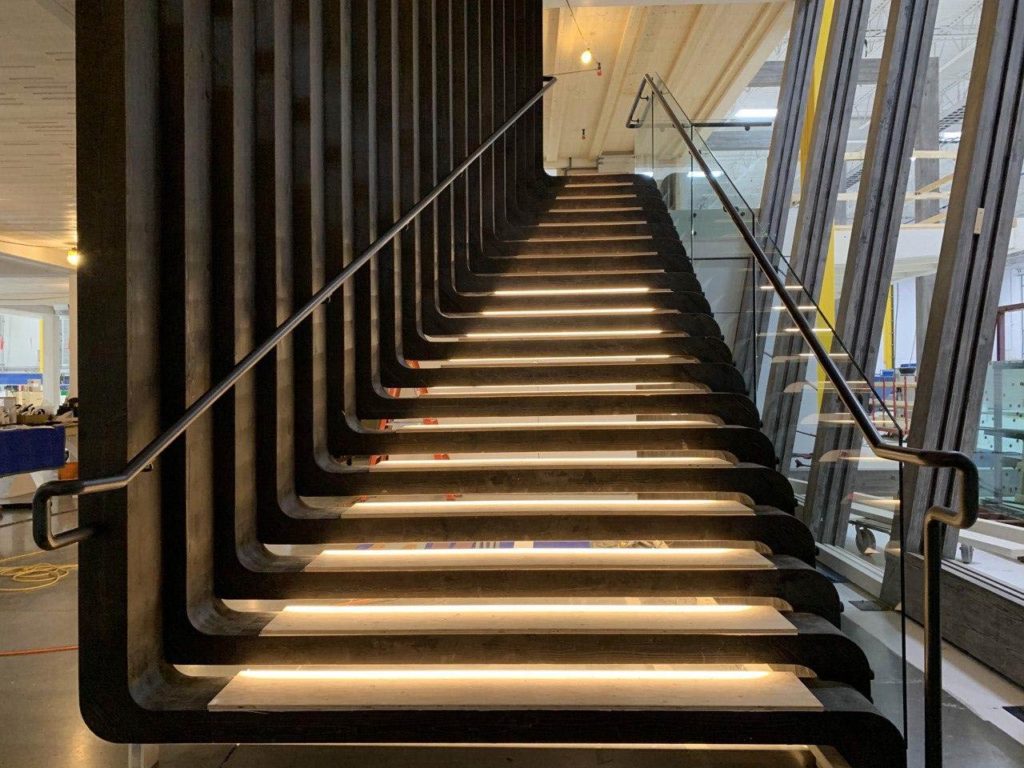
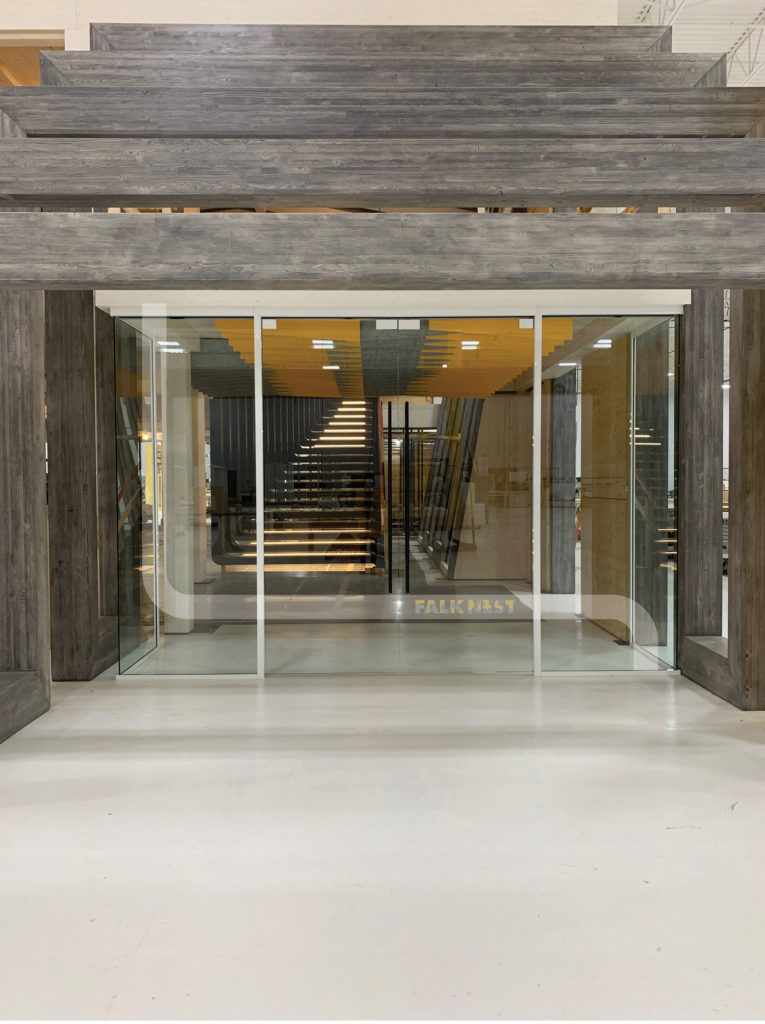

You are architect and interior designer, too. How does this experience affect your philosophy and concept in your projects?
Architecture and interior design are inseparable; they are interrelated and constantly complementing each other. Interior design principles as well as architectural forms and elements need to create one experience. At the same time, I like to use these not only as a tool but to change the perception of how we look at everything around us.
Why architecture and why not interior design?
Actually both; architecture and interior design. By experiencing both, I find interior spaces to be more interesting. I like to bring the architectural sprit, form and manifestation into interior spaces and create a unique experience which is functional, inspiring and livable. Some architects, such as Frank Lloyd Wright and Arthur Erickson, would start by designing interiors which then drove the exterior architecture. This works the other way too.
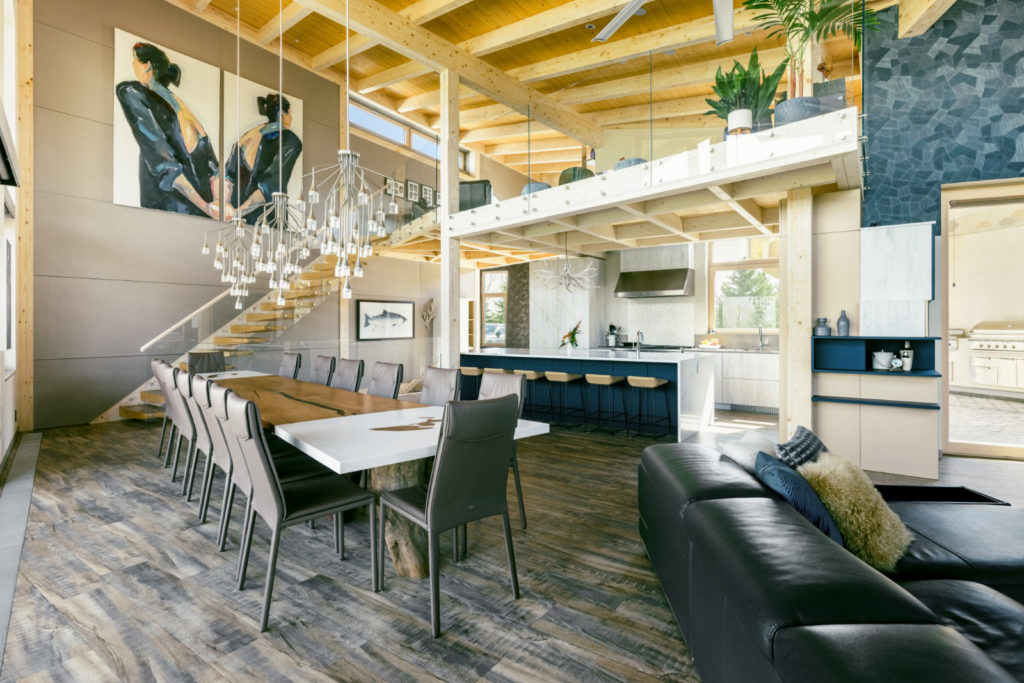
Do you think an architect can be a good interior designer?
In my opinion most of design-related professions came, over time, from the heart of architecture. Architects used to do all stages of design from landscape to the architecture, structure, interior design and even furniture or industrial design, but now every stage of designing a space needs its own profession and expertise. Today, an architect can’t be a good industrial designer unless he or she is focused and educated in industrial design. It’s the same for interior design. I’ve been focused on interior architecture since that’s how I was educated and I have more passion for it. Some architects want to control the interiors, furniture and lighting design; for example Frank Gehry, Zaha Hadid and Mies Van Der Rohe.

How does your knowledge of Interior design affect your design and design structure?
I have gained knowledge through not only my formal training, but different work experiences. This has had an enormous influence on the vision, the way I look at my surrounding spaces and design in general and how I think about improving the quality of each space, structure and eventually the quality of life that’s happening in those spaces.
You take the principles and elements of design that you learn at school and then, entering the world of design, you constantly learn how to do more effective space planning, programming, job coordination, management and research. You also learn how to best communicate with different contractors and stakeholder to achieve a functional, healthier and aesthetically pleasing environment for the people using it.
What type of architectural project you prefer to do?
I personally like smaller scale hospitality projects, restaurants, cafes and retail. Places where people gather, talk, eat, create, solve the world’s problems. I also like to work on projects that are fun and exciting, creative and functional throughout the whole design process.
Which one of your projects is your favourite? Were there any projects you worked on that you knew from the beginning the result would be perfect?
The Falk Nest is my favourite project, to date, in my career. From the beginning I was challenged to be creative in design and was given total freedom. Throughout the process I’ve been supported by an amazing team which gives me the confidence to say that the end result will be spectacular.
Most of the projects I’ve worked on over the years have been collaborative efforts. And given the vagaries of construction, client perception, budget and schedule there will always be challenges and varying levels of satisfaction with projects. But the Falk Nest has been an outstanding endeavor.
Are you inspired by nature during design process?
Nature has always been the biggest source of inspiration for me both personally and professionally. Being in nature informs my inner feelings, energy level, productivity and mood. Somehow nature always pulls us away from our daily to do list and other minutiae into something that can be so incredibly humbling. The shapes, forms, colours, textures, smells and sounds I see, hear and feel in nature will always inspire me in my design life. Being outside always makes me think more, and more deeply. Maybe my ultimate goal in design is to leave people with the experience and feeling in the space I design that I feel when I am in nature.
What innovative materials have impacted design opportunities, specifically the Falk Nest?
The core of Falk Nest is made of laminated and cross laminated timber, which we I believe represents the next generation of construction. There’s absolute precision and structural stability and this offers opportunities for creating expressive and distinct environments. It’s not difficult to work with these massive beams given the advanced 3D software programs that are out there now. You can design any complex structure, and really you’re only limited by your imagination. That’s very exciting for an architect and designer.
While we designed and engineered the Falk Nest in Calgary, the laminated Swiss Spruce timbers which came from sustainable forests in Europe, were fabricated in Switzerland. Although there are hundreds of distinct and complex connections in the 6,400 sq ft Falk Nest, we were able to install what I honestly think is a masterpiece in just over 10 days.
The precise Swiss fabrication is key. In North America, most uses of laminated timber require exposed metal brackets for even the simplest of connections. But in Falk Nest, the sheer plates at the bottom of the vertical timbers are the only metal connections in the entire structure. Every other intersection is either a wood to wood connection dove tail, mortise or tenon and because there is consistency in the color of the laminated timbers, you can get extraordinary range of finishes, especially when the grain is brushed.
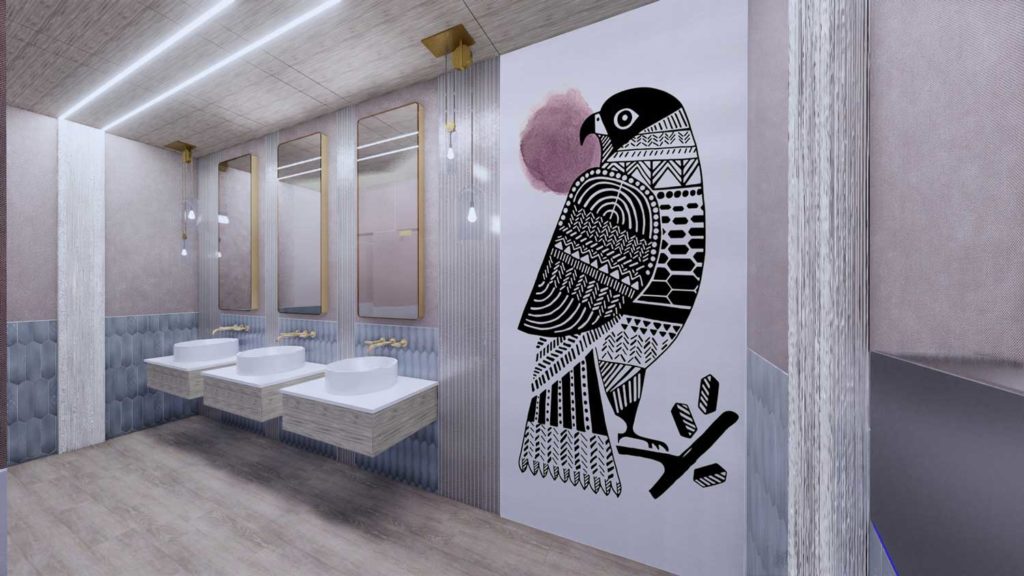
What are your worries between design and implementation?
When you’re converting design to reality, it’s crucial to watch the details diligently and make sure that contractors can implement them and of course it’s important to meet the client’s needs, budget and timeline as well as handle any unexpected design changes during the build. There are always unexpected design changes!
Could you please describe the idea behind your last design?
The Falk Nest, which is the working office environment for Falkbuilt, is inspired by birds. In nature birds have evolved to use a number of different materials in their nests. That way they save energy and adapt to whatever surroundings they find themselves in. When I was designing the Falk Nest I kept thinking of birds and how they make these incredibly complex nests with natural materials. I thought of Falk employees—we call ourselves Falkers—as birds needing a nice nest where they could thrive. Another interesting element of the Falk Nest is that it’s very intentionally right in the middle of the factory. Placing it there erases any boundaries between those Falkers working in the factory and those working in the office. Everybody works together and every Falker experiences every aspect of business; from meeting clients, building software and manufacturing components for interior construction.
To me, I like the idea that we are making these digital components for interior construction—for other people’s nests if you will. To be honest it was a little intimidating because many of Falk’s clients are architects and interior designers—they come from all over North America to tour the factory and soon to experience the Falk Nest. I had to ensure the design and space inspire them too.

What points are important in workplace design?
It’s crucial to consider the culture and work of the company and bring that life into the design
Knowing the company’s plans and making sure the space will be useable and effective for the future and incorporate ever-changing technology
Ensuring the design identifies and encourages productivity as well as wellbeing of people who work there
Enabling better work behaviours by designing an ergonomic and comfortable office space that leads to happier and motivated staff
To create a fun and homey environment that brings people close together
Does client comment affect your design process?
Absolutely. The whole design process is influenced by clients who understand the value of great architecture and design. You can never achieve quality, let alone a truly functional solution without a strong design process. The input and response of the clients will always influence the design process and outcome. As designers we should be committed to deliver the best possible solution in any application.
What is a future project?
I am working on an Art Studio which is going to be my next favourite project, after Falk Nest that is.




